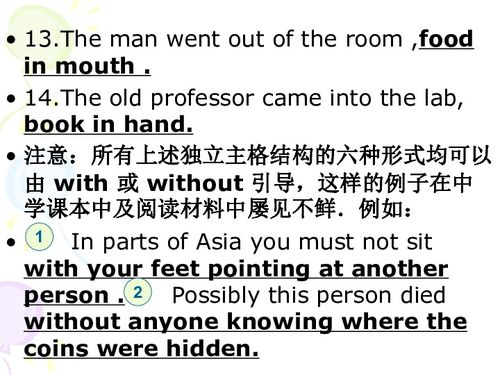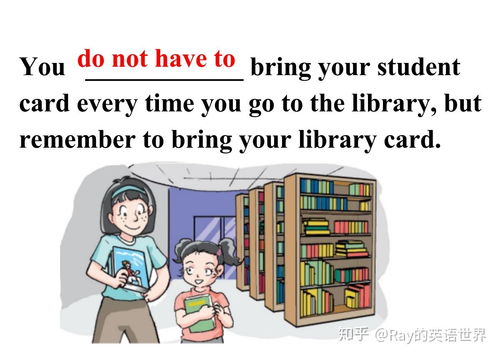常见的'the way'用法有哪些?
The Way: A Multidimensional Exploration of Its English Usages
In the vast landscape of English vocabulary, "the way" stands out as a versatile and expressive phrase. Its usage spans across multiple dimensions, from noun to adverb, and it can be followed by a variety of grammatical constructs, including prepositional phrases, infinitive phrases, and different types of clauses. Understanding the multifaceted nature of "the way" enables us to communicate more precisely and effectively in English.

As a Noun: Expressing Methods and Attitudes
Firstly, "the way" functions as a noun, representing methods, manners, or attitudes. This usage allows us to describe the specific approach someone takes towards a task, a conversation, or a situation.

Examples:
*I don't like the way you speak to her.* Here, "the way" refers to the manner in which someone speaks, conveying disapproval.
*The way he treated us was unacceptable.* This sentence expresses dissatisfaction with the method of treatment received.
In these instances, "the way" encapsulates the entire behavior or approach, serving as a focal point for commentary or evaluation.
As an Adverb: Indicating Degree or Manner
Beyond its role as a noun, "the way" can also function as an adverb, conveying a sense of how something is done or how it appears.
Examples:
*She danced beautifully the way she had always done.* Here, "the way" modifies the verb "danced," indicating the familiar and graceful manner in which she performs.
*I was impressed by the way he handled the situation.* The phrase highlights the impressive manner in which the situation was managed.
As an adverb, "the way" adds a layer of description, providing insights into the nature or quality of an action.
Following Prepositional Phrases
"The way" is often followed by prepositional phrases like "in the way," "on the way," or "by the way," each carrying distinct meanings.
In the way: This phrase signifies an obstacle or hindrance. *Don't stand in the way.* implies that someone is blocking progress or access.
On the way: It refers to a location along a journey or path. *I met her on the way to school.* indicates an encounter that took place during travel.
By the way: Used as a discourse marker, it introduces a tangential remark. *By the way, how old are you?* is a casual question inserted into a conversation.
Following Infinitive Phrases
When "the way" is followed by an infinitive phrase (e.g., "the way to do sth."), it denotes the method or approach to achieving something.
Examples:
*Can you show me the way to do this exercise?* Requests instruction on how to perform a specific task.
*I'm trying to find the best way to learn English.* Expresses the pursuit of an optimal method for language acquisition.
In these cases, "the way" serves as a vehicle for exploring and communicating effective strategies or techniques.
In Different Types of Clauses
"The way" can also precede various types of clauses, including definitive, comparative, and descriptive structures, each enriching the meaning and context of a sentence.
Definitive Clauses (Relative Clauses/Defining Clauses):
When "the way" is followed by a definitive clause, it provides specific information about the manner in question. The clause may be introduced by "that," "in which," or even omitted in informal settings.
Examples:
*He did it the way I told him.* (Omitting "that" or "in which")
*The way (that/in which) she spoke to me was very rude.
Comparative Clauses:
"The way" can also be used in comparative structures, where it conveys a similarity or dissimilarity between two methods or approaches.
Example:
*No one can imagine the way he misses her. It's unlike anything I've ever seen.* Here, "the way" compares the depth of missing to an unprecedented level.
Descriptive Clauses (Non-defining Clauses/Non-restrictive Clauses):
Occasionally, "the way" introduces a descriptive clause that adds additional, non-essential information to the sentence.
Example:
*The book, the way I see it, is a masterpiece of contemporary literature.* Here, the clause offers the speaker's personal opinion without altering the core meaning of the sentence.
As Part of Idiomatic Expressions
- 上一篇: 超简单家常美味肉饼制作秘籍
- 下一篇: 萌动童心:创意无限的小羊简笔画教程,一笔画出温柔小世界
-
 请问'down'这个词有哪些常见含义或用法?资讯攻略10-27
请问'down'这个词有哪些常见含义或用法?资讯攻略10-27 -

-
 掌握Convey短语及其精准用法资讯攻略11-14
掌握Convey短语及其精准用法资讯攻略11-14 -
 The Art of Saying 'Where, Where' in English资讯攻略10-30
The Art of Saying 'Where, Where' in English资讯攻略10-30 -
 Understanding the Usage of 'Have to资讯攻略12-07
Understanding the Usage of 'Have to资讯攻略12-07 -
 泰戈尔经典爱情诗《飞鸟与鱼》全文,你读过吗?资讯攻略12-29
泰戈尔经典爱情诗《飞鸟与鱼》全文,你读过吗?资讯攻略12-29












